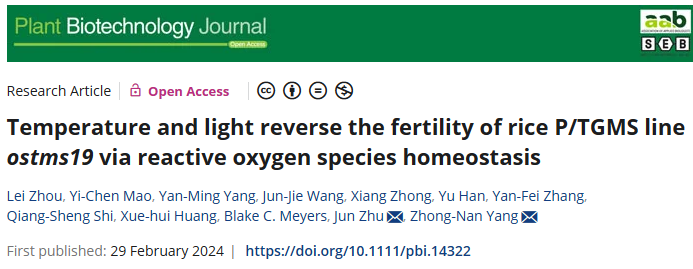On February 29th, SHNU Professor Yang Zhongnan and Professor Zhu Jun's team from the School of Life Sciences published a research paper titled Temperature and light reverse the fertility of rice P/TGMS line ostms19 via ROS home ostasis (DOI: 10.1111/pbi. 14322) at the Plant Biotechnology Journal. This study discovered a new site ostms19 for rice photothermal sensitive sterility, revealing the common mechanism of rice photothermal sensitive fertility transition.
Sensitive sterility due to light temperature, as an important agronomic trait, plays a crucial role in rice two-line hybrid breeding. Although many temperature-sensitive male sterile sites have been found in rice, the common mechanisms by which temperature and light affect rice fertility are still unclear. The research team utilized the model plant Arabidopsis to explain the common mechanism of slow microspore development under low temperature for plant fertility recovery (Zhu et al., 2020, Nat Plant 6:360-367; Zhang et al., 2020, Plant Physiol 184: 923-932; Shi et al., 2021, Mol Plant 14:2104-2114; Wang et al., 2021, JIPB 64: 717-730) in the preliminary work. However, the photothermal sensitive sites found in rice are significantly different from those in Arabidopsis, indicating that in addition to slow growth, there are other common mechanisms of photothermal infertility in rice. The research group has invented the technology for creating rice photothermal sensitive male sterile lines.


